Have you ever heard someone calling a wild horse a stallion.
Or maybe you heard a baby horse being called a pony.
More times than not, especially if these people are limited on experience with horses, they are probably wrong. Wild horses are not always stallions and ponies are not all baby horses.
When riding and working with horses it is important to know the correct horse gender and age terms, so that you not only don’t sound like a newbie, but can also accurately discuss horses with other equestrians and professionals.
Luckily when I started horseback riding as a child, I learned these terms on horses gender and age pretty early on, while in Pony Club. Although, I don’t remember being taught much about them in my weekly riding lessons, which were separate from Pony Club.
It is not only important to know the names of the terms but to also be able to identify the horses as well and know the differences.
Male and female horses, aside from having different genitals, also have different characteristics as well.
So if you are wondering the accurate names for a female horse or male horse and how to tell them apart, you are in the right place.
There are a handful of terms we call horses based on their gender which is also based on age and sometimes fertility. People most often use the words colt, stallion, gelding, filly, and mare to talk about the gender of a horse. Then there are also some gender-neutral terms that are solely based on their age.
This also pertains to horses and ponies alike.
By the end of this article, my hope is that you will:
- Know the different terms used for labeling a horse’s gender and age
- Identify whether a horse is a male or a female
- Identify whether a male horse is a gelding or a stallion
- Know the main stereotypical differences between the genders

Use the infographic if you wish but please link it to this post.
Horse Gender & Age Terms
Here is a quick look chart at the terms.
(Below the chart is more information on each of the terms and photos examples of each of them.)
| Term | Description |
| Colt | An uncastrated male horse or pony that is 4 years or younger and has not yet been used for breeding. |
| Gelding Colt | A castrated male horse or pony that is 4 years or younger. |
| Filly | A female horse or pony that is 4 years or younger. In some racing associations, females can be considered fillies up to 5 years old. |
| Foal | A foal is a horse or pony of either gender that is 1 year old or younger. A male foal is known as a “Colt Foal”, and a female foal is known as a “Filly Foal”. |
| Weanling | A weanling is a foal that is weaned from the mother and no longer gets the mother’s milk. The weanling foal is put on a solid food diet of roughage and concentrates. Foals are typically weaned between half a year to a year old. A female is known as a “Weanling Filly” and a male is known as a “Weanling Colt.” |
| Yearling | A yearling is a horse or pony of either gender that is 1 year old as the name explains. The horse is considered a yearling until 2 years of age. A female yearling is known as a “Yearling Filly”, and a male yearling that has not been gelded (castrated) is known as a “Yearling Colt.” |
| Stallion | A stallion is a full-grown male horse with his testicles intact. A colt becomes a stallion at 4 years old. |
| Gelding | A gelding is a male horse that is 4 years or older and has been castrated (had his testicles removed). |
| Rig | A rig or a Ridgling is also known as a cryptorchid horse which is a male horse that has 1 or both testicles undescended, making the horse look like a gelding but act like a stallion due to the testosterone. |
| Mare | A mare is a female horse that is 4 years or older. |
| Stud | A stud is a male horse that is a stallion or uncastrated male horse. This is a quality horse that is used for breeding purposes. |
| Broodmare | A broodmare is a female horse that is 3 years or older and used for breeding purposes. |
| Sire | Sire is a male horse and is the term used for the father of an offspring or foal. |
| Dam | Dam is a female horse and is the term used for the mother of an offspring or foal. |
| Aged | An aged horse is either gender that is 15 years old or older. A female horse would be called an “Aged Mare” and a male horse would be called an “Aged Gelding” or “Aged Stallion” depending on whether the male was castrated or not. |
Newborn Foal

A horse or pony that has just been born is referred to as a newborn foal, and this term may refer to either a male or female animal. A foal is generally considered a newborn during the first few hours after birth, as it goes through a series of developmental milestones.
In most cases, they will be able to stand up within 30 minutes, and they will begin to nurse from their mothers after 2 hours. The quick development of motor skills after birth is very important for the foal’s survival in the wild. It helps them stay with their herd and evade danger, swiftly escaping from predators.
Foal
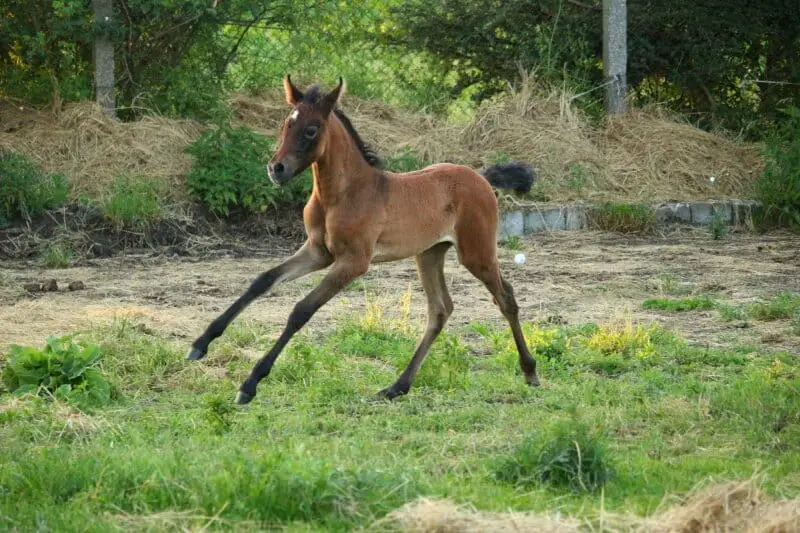
A horse or pony whether male or female, that is under one years old, is called a foal. The term “Colt Foal” is used to refer to a male foal, whereas the term “Filly Foal” is used to refer to a female foal.
What’s the difference between a colt and a foal?
A foal can be either gender whereas a colt is just a male. A foal is considered up to 1 year old, whereas a colt can be until they are 4 years old.
How can you tell a male from a female foal?
The female’s genitalia is under the tail below the anus, whereas the male’s will be under the belly toward the hind legs.
Colt
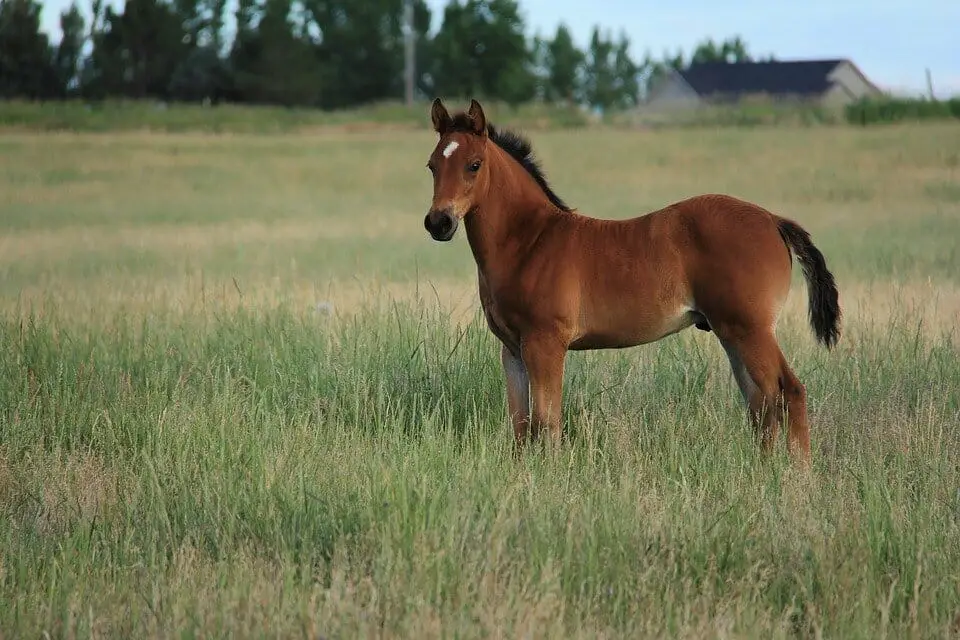
A colt is a male horse or pony that is four years old or younger, has not been castrated, and has not yet been used for breeding.
A castrated male horse 4 years old or younger is sometimes referred to as a “gelding colt,” although the term “gelding” can be a term used by itself for any age.
What is the difference between a colt and a filly?
They are both horses under the age of 4 years old, but A colt will always be a male, while a filly will always be a girl.
At what age is a colt considered a stallion?
A colt is considered a stallion at 4 years old if he has not been castrated.
At what age is a colt fertile?
A colt usually becomes fertile between 18 and 24 months, or 1 and a half – 2 years old.
What is the difference between a colt and a pony?
A pony is a type of horse that is less than 14.2 hands, while a colt is a young male horse. A colt may sometimes be referred to as a pony, however, a pony does not automatically refer to a colt.
Filly

A female horse or pony that is four years old or younger is referred to as a filly. Filly is also a term that may be used for female racehorses that are up to 5 years old in some horse racing organizations.
What is the difference between a filly and a mare?
A female horse that is still developing into an adult is called a filly, whereas an adult female horse is called a mare.
Weanling
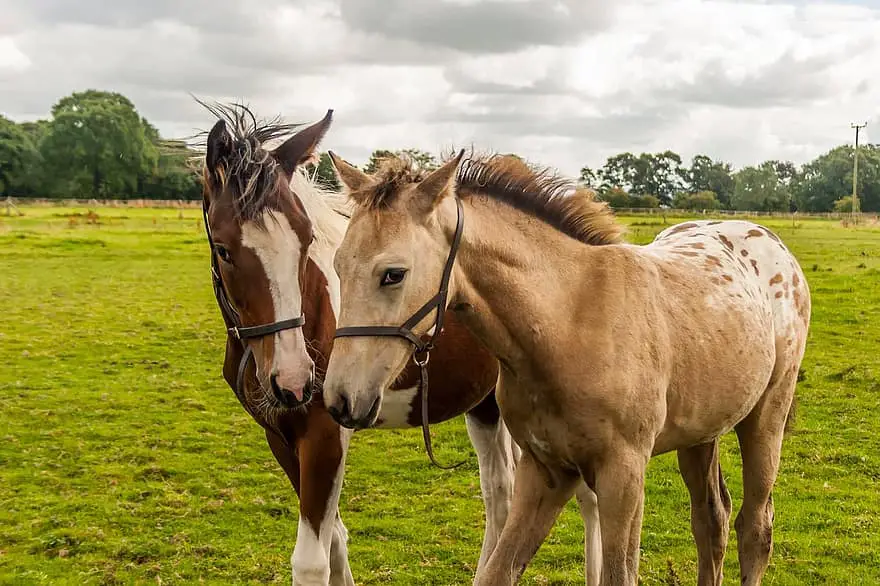
A foal that has been separated from its mother and is no longer fed its mother’s milk is referred to as a weanling. After being weaned, the foal will begin eating a diet consisting of roughage and concentrates.
Weaning age for foals ranges from six months to one year of age in most cases. The young female is referred to as a “Weanling Filly,” while the young male is called a “Weanling Colt.”
Yearling
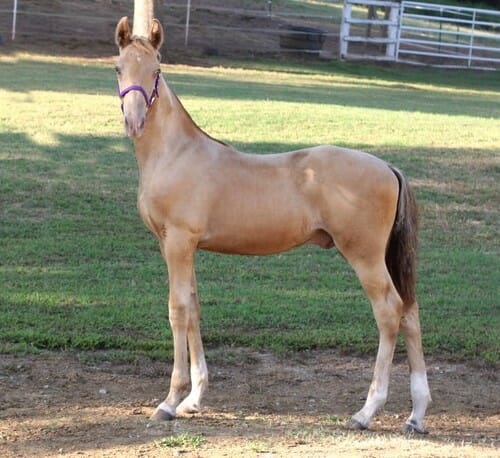
According to the definition provided by its name, a yearling is a horse or pony of either gender that has reached the age of one year old.
Up to the age of two, the horse is still regarded to be a yearling. “Yearling Filly” refers to a female yearling, whereas “Yearling Colt” refers to a male yearling that has not yet been gelded (castrated).
Stallion
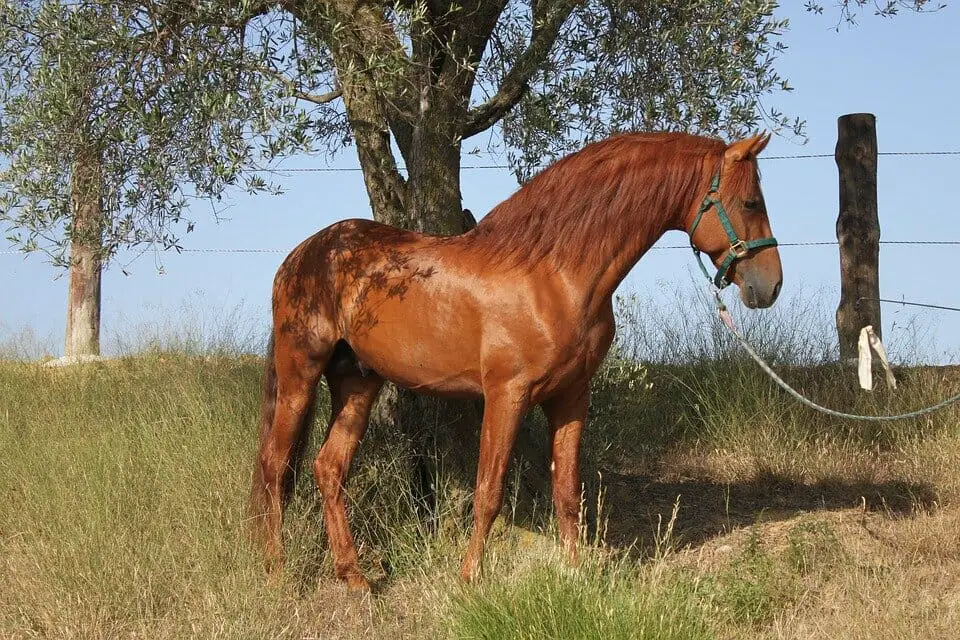
A mature male horse that still has his testicles present is referred to be a stallion. At the age of four, a colt matures into a stallion.
What is the difference between a stallion and a stud?
A stallion is only a stud if he is used to breed other horses. Some people may call their stallion a “stud,” even if they don’t use him to breed, but this usually means that he is for sale to people who want to breed their mares to him. Stud can also mean a farm that breeds horses, but stallion is never used in that way!
Why do stallions have thick necks?
Stallions tend to have thick necks because they still have testosterone in their bodies. There is a difference between a thick neck caused by muscles and a cresty neck, which is caused by fat deposits.
If your stallion’s neck is thick because he works hard or exercises a lot, don’t worry. But if your stallion is cresty because he is overweight, it could be a sign of a health problem or that he needs a new diet.
Why do stallions poop in the same place?
When stallions do their business in the same spot, this is called “elimination marking.” It probably started out as a way for the stallions in a herd to talk to each other and to other stallions.
Elimination marking can also be used to mark a trail or to show territory. Sometimes he does it to let other horses know he’s there. Stallions probably don’t realize they’re doing this, which is why they still poop in the same place when they’re stalled.
This may be the most desirable thing stallions can do, because it makes mucking time so much easier.
Gelding
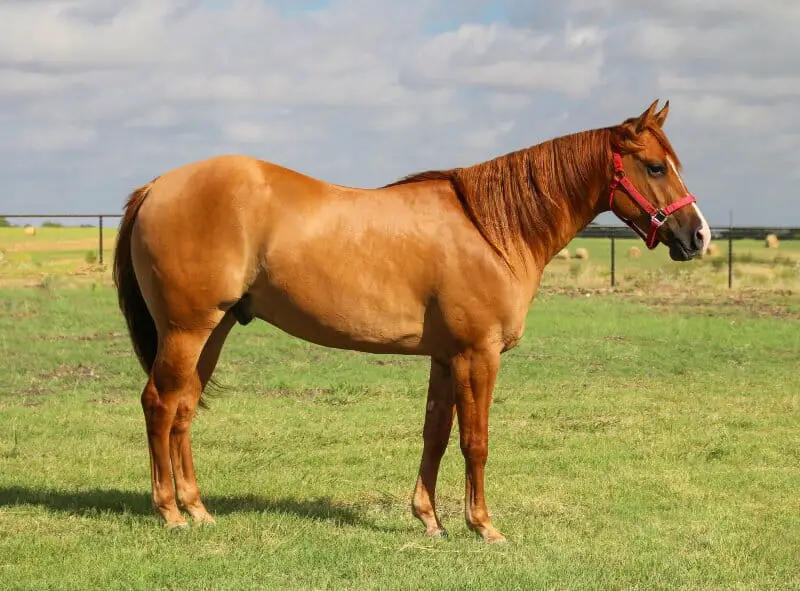
Male horses who are at least four years old and have been castrated are considered to be geldings (had his testicles removed).
What is the difference between a gelding and a stallion?
Castration of a stallion results in the creation of a gelding. Stallions are intact male horses and geldings have no balls.
What is the difference between a gelding and a colt?
Even though the word “colt” is usually used to describe a young, intact male horse, young geldings are sometimes still called colts. A horse that has been castrated is called a “gelding.” Colt is more about age, and gelding is more about the horse’s gender.
What age is best to geld a colt?
You can geld a colt at almost any time. But it is best to geld young so that the horse doesn’t develop stallion-like tendencies. It is also helpful to geld before weaning so that the mare can comfort the colt as he heals.
Is gelding cruel?
It is not cruel to neuter a colt or stallion. On farms, stallions are kept away from other horses, but geldings can live with other horses in the pasture.
So stallions may be able to have foals, but geldings get more social interaction and companionship. During castration, the horse is usually put to sleep and the area is numbed.
Most of the time, the process is quick. If the horse doesn’t get the care it needs after surgery, it can be painful. The horse should be given antibiotics, painkillers, and cold hosing’s on a regular basis.
Ridgling
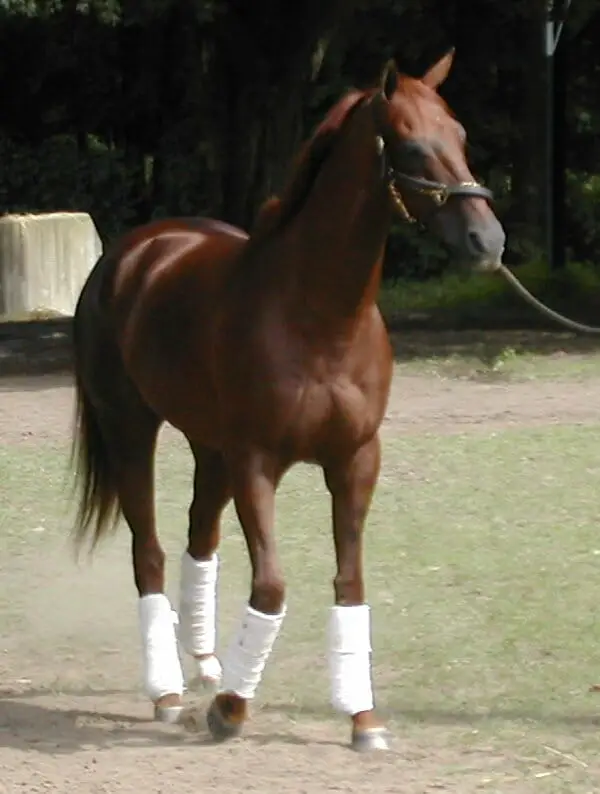
A cryptorchid horse, also known as a rig or a ridgling, is a male horse that has one or both testicles undescended. This condition causes the horse to seem to be a gelding, but it causes the animal to behave like a stallion since testosterone is present in its body.
What is a proud-cut horse?
The term “proud-cut” refers to a gelding who did not have his epididymis or perhaps both of both testes removed during castration.
They were assumed to be sterile, yet they still exhibit some of the strong stallion temperament. Although leaving the epididymis does not guarantee that the gelding is still producing testosterone, most proud-cut geldings are cryptorchid.
Even if you just castrate the descending testicle and leave the internal one intact, the gelding will continue to release stallion hormones even if he is sterile.
Mare
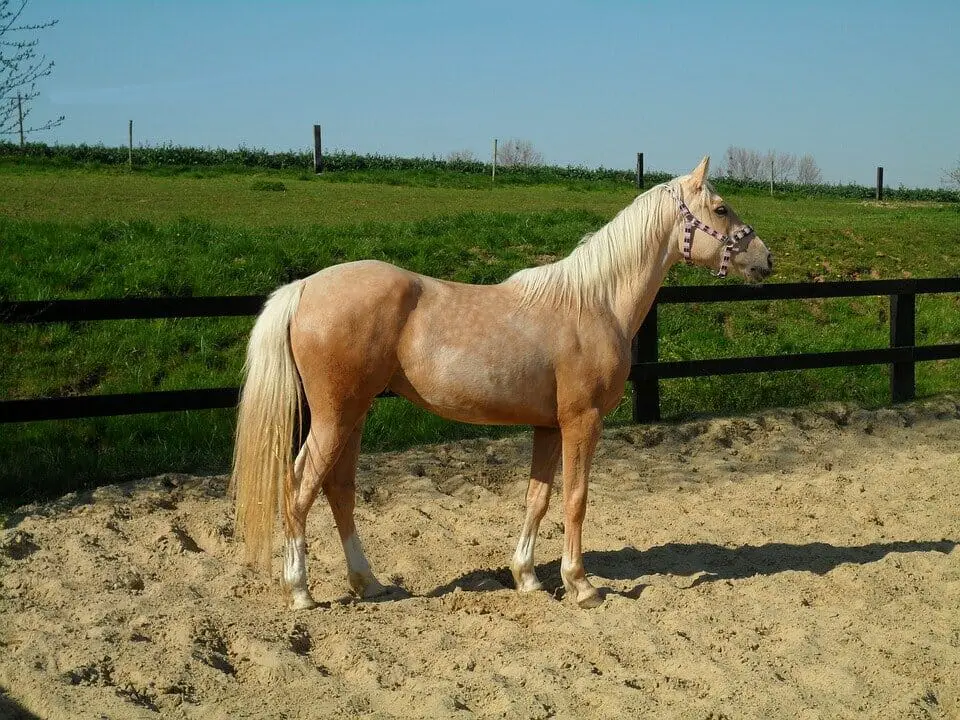
A female horse that is at least 4 years old is considered to be a mare. Around the age of 18 months, a female horse has the potential to give birth to a foal.
However, it is best to wait at least four years for the mare to give birth, since by that time she will have reached her full size. It is possible for a mare to have foals even when she is in her late 20s.
What is the difference between a filly and a mare?
A female horse that is still developing into an adult is called a filly, whereas an adult horse is called a mare.
At what age do mares stop going into heat?
Mares can become infertile, but they still go into heat and cycle throughout their life.
Stud
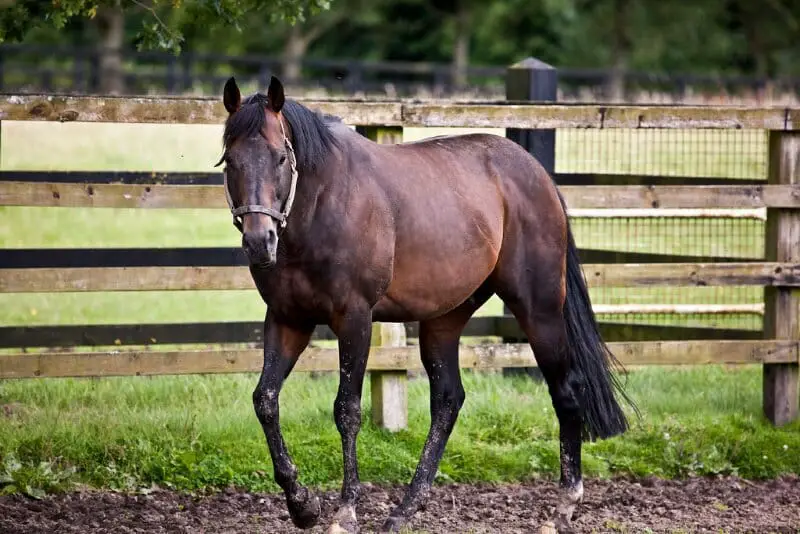
A male horse that is either a stallion or has not been castrated is referred to as a stud. This is a good horse that is kept for the purpose of breeding other horses.
Broodmare
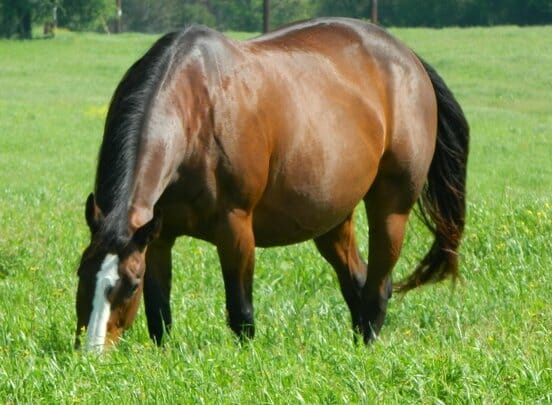
A female horse that is at least three years old and is kept for breeding reasons is referred to as a broodmare.
Sire
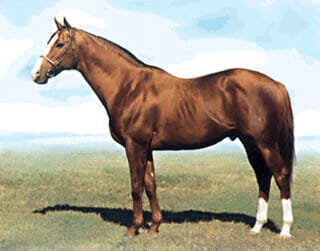
The word “sire” refers to a male horse and is also used to describe the horse that is the parent of an offspring or foal.
Dam

The word “dam” refers to the mother of an offspring or foal and is also used to refer to a female horse.
Aged Horse or Senior
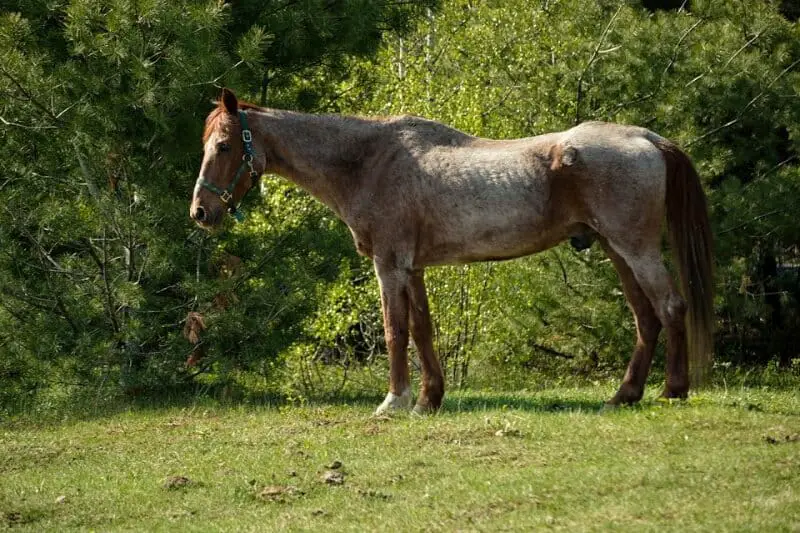
A horse of either gender that is at least 15 years old is considered to be aged. An older female horse is referred to as an “Aged Mare,” while an older male horse is referred to as either an “Aged Gelding” or an “Aged Stallion,” depending on whether or not the male was castrated.
Identifying Whether A Horse Is Male Or Female
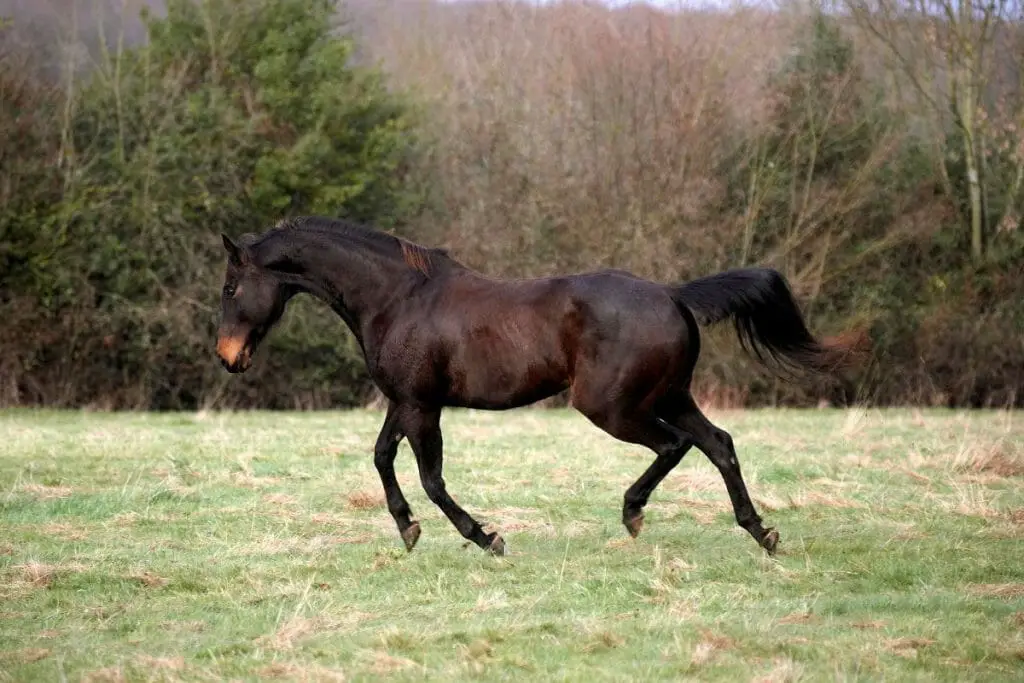
It is not all that hard to determine whether a horse is male or female.
Look under the horse’s belly toward the hind legs. If you see a sheath, then it is a male.
The penis may be tucked up into the sheath or hanging out. Usually, the penis hangs out when the horse is really relaxed or when the horse is aroused by a mare.
A stallion will have testicles behind the sheath between the hindlegs. A gelding won’t have any testicles.
The testicles drop between 30 days before birth to 10 days after birth.
Sometimes colts have testicles that never dropped and they look like geldings. Or one testicle dropped and they had it removed but the horse still had the other one that never dropped. These are in fact still intact stallions or colts and they act like it.
I mentioned this in the horse gender terminology. They are called several names a rig or a ridgeling which is also known as a cryptorchid horse.
Now that you know what to look for in a male horse, let’s go over how to tell if a horse is a female.
Well, a big indication that a horse is a female is that the horse has no genitals under the belly toward the hind legs.
But there are teats located there where a mare would nurse her young.
If you lift up the horse’s tail, the anus will be right under the top of the tail, and right below the anus is the vulva (the mare’s female part).
Male Horse Characteristics
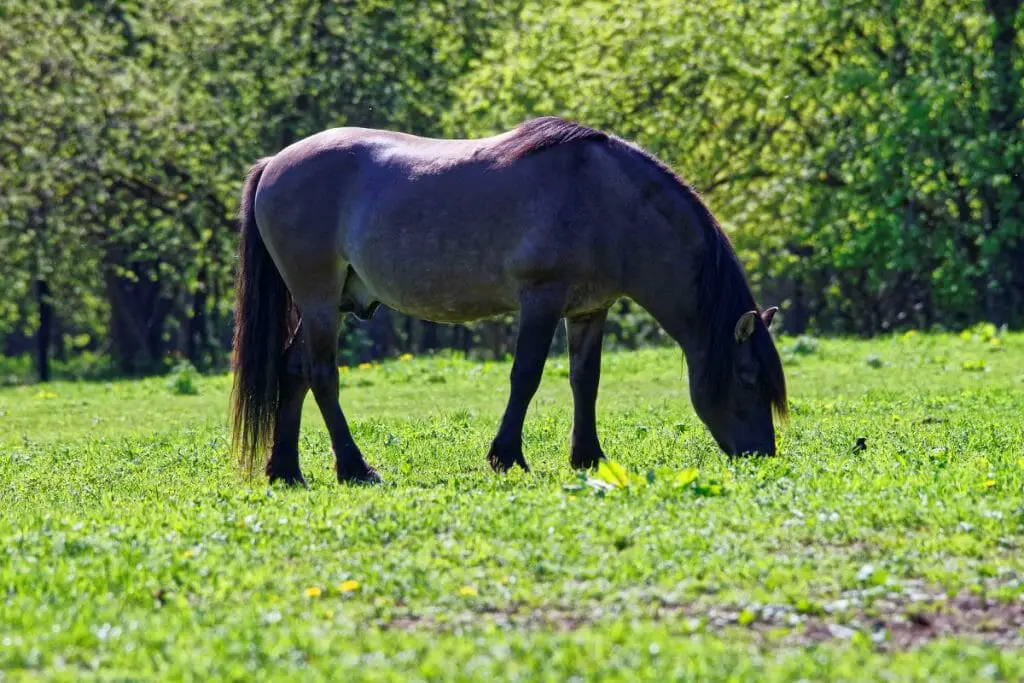
Geldings and Stallions are both males but have very different characteristics. Stallions are often gelded so that they are easier to manage and handle.
Stallions have testosterone which affects their focus, making them stronger, flashy, and more muscular. Stallions tend to get easily distracted especially around mares. They tend to get one thing on their mind.
Some stallions are easier to handle than others but most are on the more aggressive side. Stallions usually look buff compared to geldings, their necks are especially noticeable and muscular.
Geldings are usually level-headed because they are not clouded by testosterone and the desire to breed. They are also not as muscular as stallions. Geldings can be aggressive which is more driven by personality and environment compared to a stallion who might act aggressively due to testosterone.
Geldings are most commonly desired among equestrians because of their lack of hormone fluctuations.
Female Horse Characteristics
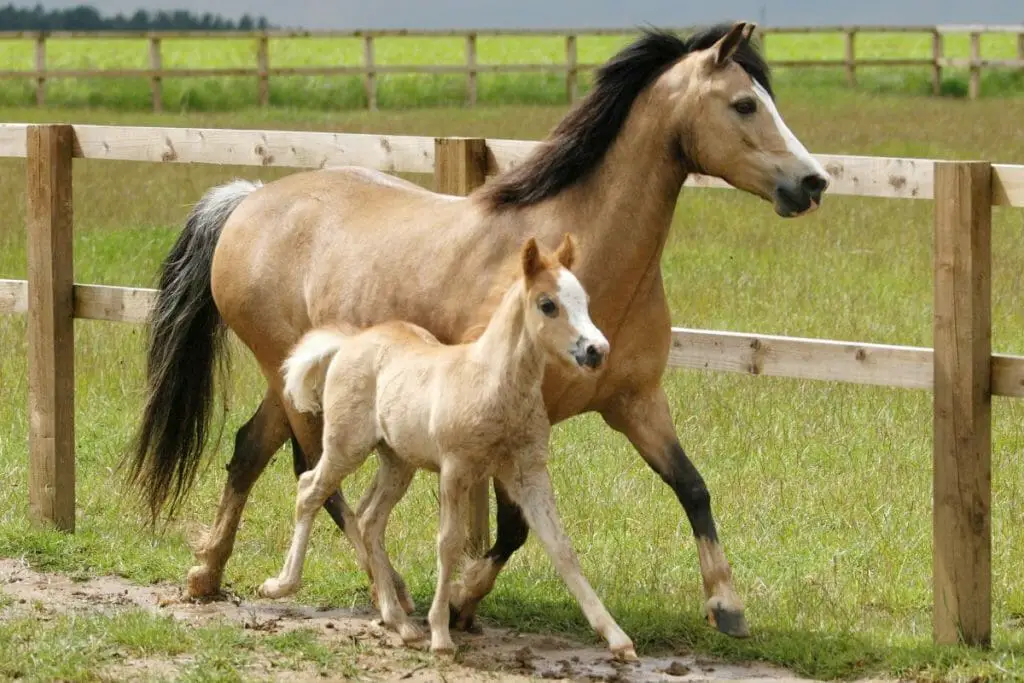
Mares are easier to work with than stallions but sometimes more difficult than geldings. Mares going into heat on a regular basis and like stallions, they get distracted by sexual urges. It’s called Estrus when a mare is in heat and happens roughly every 21 days.
The hormones in mares fluctuate a lot and they are seen to have moody behaviors periodically. Some mares are level-headed and you can’t even tell when a hormonal change is happening, but then other mares are extremely moody and aggressive. So it depends on the mare.
Some people prefer mares. They tend to bond more with one person whereas a gelding might be okay with several people. Mares also have that motherly instinct that may contribute to the strong bond they can have. But I have seen geldings be one person type horses as well.
Which is better: a mare or a gelding?
Some have a preference for geldings, while others like mares. The fact that geldings are known to be more even-tempered and laid-back throughout the month is one of the primary reasons why many people choose to get them.
Video On Horse Personality & Horse Genders
Horse Gender FAQs
Here are other commonly asked questions about horse gender terms. Some of them are a little silly or repetitive but nonetheless I answer them here.
What is a female pony called?
A female pony has the same name as a female horse. A filly is under 4 years old and a mare is 4 years or older.
What is a female horse over 5 years old called?
A female horse over 5 years old is called a mare.
At what age does a filly become a mare?
A filly becomes a mare at 4 years old.
What is the difference between a stallion and a horse?
The term “horse” may apply to any gender of the species, including but not limited to foals, mares, stallions, and geldings. The term “stallion” may only be used to refer to an unaltered adult male horse.
What is the difference between a stallion and a mustang?
A stallion is a fully developed, complete male horse of any breed or kind. Mustang is a wild horse situated in the western United States that originated from horses brought over by Spain. The degree of Spanish heritage varies from herd to herd.
What is a female colt called?
There is no such thing as a female colt. A colt is a male horse under 4 years old. A filly is the female opposite of a male colt.
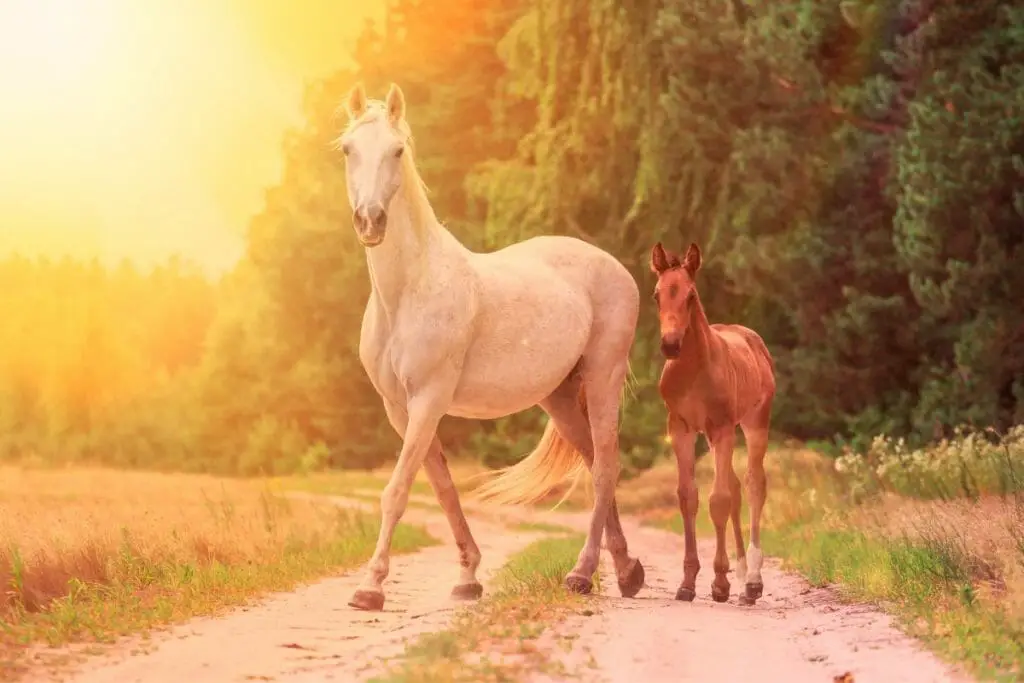
Conclusion On Horse Gender and Age Terminology
Now that you know the terms and their definitions you will be able to much more easily talk about horses with other equestrians and equine professionals.
You will also be able to go out to the paddock and identify which horses are the mares and which horses are the geldings. Hopefully as a beginner you will not be handling any stallions.
If you’re in the market for a horse, it’s critical that you’re familiar with the terminology so you know exactly what you’re buying and have a general idea of the stereotypes of stallion, mare and gelding.
Even if you are not buying a horse and you are in a lesson program you should know your horse’s gender and other terms that people at the barn and in the horse world will be using.
You will want to know the description of the lesson horse you should be pulling out of the paddock or stall. Like the color markings and that includes whether it is a mare or gelding.
Otherwise, you may be leading the wrong horse.
Cheers, Kacey
P.S. Did you like this article? Gallop over to:


When defining a Stallion it’s typed ~ at the age of four, a filly matures into a stallion.
When defining a Filly” it’s typed ~ A female horse or pony that is four years old or younger is referred to as a filly. Fillies are a term that may be used for female racehorses that are up to 5 years old in some racing organizations.
/// I like this page & just thought it would be good to edit.
~ T’
Thank you!